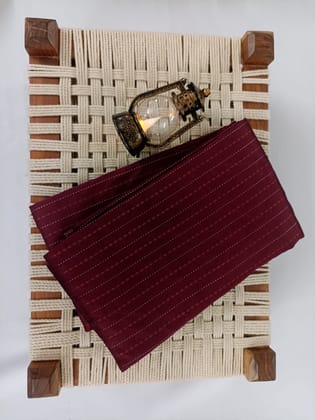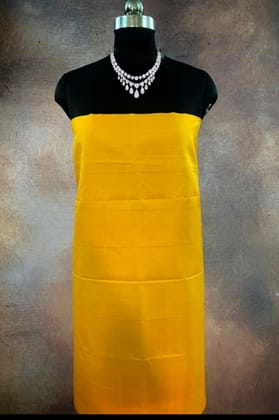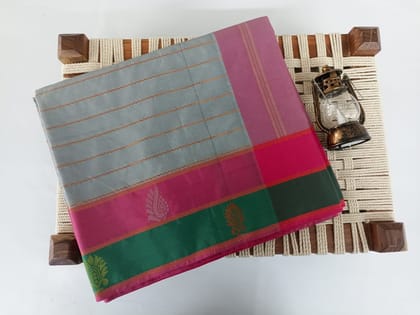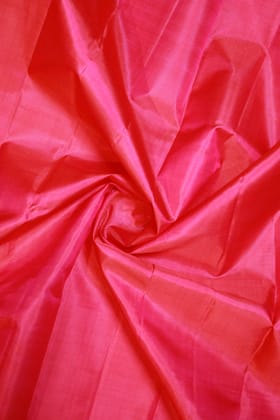Organza is a lightweight, sheer fabric that is often used in the fashion industry for clothing, accessories, and decorative purposes. It is known for its crisp texture, transparency, and subtle sheen. Here are some key characteristics and uses of organza:
Fabric Composition: Organza is typically made from silk, polyester, or a blend of synthetic fibers. Silk organza is highly prized for its luxurious feel and lustrous appearance, while polyester organza is more affordable and durable.
Texture: Organza has a stiff, crisp texture that holds its shape well. It is characterized by a slightly wiry feel and a smooth, shiny surface.
Sheerness: One of the defining features of organza is its transparency. The fabric is lightweight and sheer, allowing light to pass through it. This makes it ideal for creating ethereal, layered looks in clothing and decorations.
Versatility: Organza is a versatile fabric that can be used in a variety of ways. It is commonly used in formal and bridal wear, including wedding dresses, evening gowns, and veils. It is also popular for making skirts, blouses, scarves, and accessories such as bows and ribbons. Additionally, organza is used in home decor for curtains, table linens, and embellishments.
Color and Embellishments: Organza is available in a wide range of colors, from soft pastels to bold jewel tones. It can also be embellished with embroidery, beading, sequins, or printed designs to add texture and visual interest.
Care: Organza is generally delicate and should be handled with care. Depending on the fabric composition, it may require gentle hand washing or dry cleaning to maintain its appearance and structure. Ironing on a low heat setting with a pressing cloth is recommended to avoid damaging the fabric.
Overall, organza is a versatile and elegant fabric that adds a touch of sophistication to any garment or decor project. Its lightweight feel and sheer quality make it a popular choice for creating ethereal and romantic looks.
Washing instructions:
Organza is a delicate fabric commonly used for formal wear, wedding dresses, and decorative purposes. Proper care is essential to maintain its appearance and structural integrity. Here are general washing instructions for organza:
Check the care label: Always refer to the care label attached to your organza garment for specific washing instructions. The care label should provide guidance on the appropriate washing method for your particular item.
Hand wash: Organza is best washed by hand to prevent damage from the agitation of a washing machine. Fill a basin or sink with lukewarm water and add a small amount of mild detergent specifically designed for delicate fabrics.
Gently agitate: Submerge the organza garment in the soapy water and gently agitate it with your hands. Avoid scrubbing or rubbing the fabric vigorously, as this can cause damage or distortion.
Rinse: After washing, carefully drain the soapy water and refill the basin with clean, lukewarm water. Rinse the organza thoroughly to remove any remaining detergent.
Avoid wringing or twisting: To remove excess water, gently press the organza garment against the side of the basin or sink. Avoid wringing or twisting the fabric, as this can cause it to stretch or lose its shape.
Dry flat: Lay the organza garment flat on a clean towel or drying rack to air dry. Avoid hanging the fabric to dry, as this can cause it to stretch or become misshapen.
Use a pressing cloth: If ironing is necessary to remove wrinkles, place a clean pressing cloth over the organza fabric to protect it from direct heat. Use a low heat setting on your iron and press lightly, avoiding excessive pressure.
Store properly: Once dry and wrinkle-free, store the organza garment in a cool, dry place away from direct sunlight. Avoid folding the fabric along creases for extended periods, as this can cause permanent wrinkles.
It's essential to handle organza with care to preserve its delicate nature and unique appearance. If you're unsure about washing your organza garment at home, consider taking it to a professional dry cleaner experienced in handling delicate fabrics. They can provide specialized care to ensure your organza item remains in pristine condition.
Popular Categories
Support
Language
Our apps
Navasaarigai
NVSBO018-Sky Blue Color Organza | Per meter
MRP ₹300
| Country of origin | India |
|---|---|
| Brand | Navasaarigai |
| Common name | Organza Dupatta |
| Net Quantity | 1 unit |
| Product Dimensions | 250*109.22*1 |
| Manufacturer or packer name | Navasaarigai |
| Manufacturer or packer address | Thiruvannamalai |
| Manufacturing Date | 01/2024 |
| contact details consumer care | [email protected] |
Organza is a lightweight, sheer fabric that is often used in the fashion industry for clothing, accessories, and decorative purposes. It is known for its crisp texture, transparency, and subtle sheen. Here are some key characteristics and uses of organza:
Fabric Composition: Organza is typically made from silk, polyester, or a blend of synthetic fibers. Silk organza is highly prized for its luxurious feel and lustrous appearance, while polyester organza is more affordable and durable.
Texture: Organza has a stiff, crisp texture that holds its shape well. It is characterized by a slightly wiry feel and a smooth, shiny surface.
Sheerness: One of the defining features of organza is its transparency. The fabric is lightweight and sheer, allowing light to pass through it. This makes it ideal for creating ethereal, layered looks in clothing and decorations.
Versatility: Organza is a versatile fabric that can be used in a variety of ways. It is commonly used in formal and bridal wear, including wedding dresses, evening gowns, and veils. It is also popular for making skirts, blouses, scarves, and accessories such as bows and ribbons. Additionally, organza is used in home decor for curtains, table linens, and embellishments.
Color and Embellishments: Organza is available in a wide range of colors, from soft pastels to bold jewel tones. It can also be embellished with embroidery, beading, sequins, or printed designs to add texture and visual interest.
Care: Organza is generally delicate and should be handled with care. Depending on the fabric composition, it may require gentle hand washing or dry cleaning to maintain its appearance and structure. Ironing on a low heat setting with a pressing cloth is recommended to avoid damaging the fabric.
Overall, organza is a versatile and elegant fabric that adds a touch of sophistication to any garment or decor project. Its lightweight feel and sheer quality make it a popular choice for creating ethereal and romantic looks.
Washing instructions:
Organza is a delicate fabric commonly used for formal wear, wedding dresses, and decorative purposes. Proper care is essential to maintain its appearance and structural integrity. Here are general washing instructions for organza:
Check the care label: Always refer to the care label attached to your organza garment for specific washing instructions. The care label should provide guidance on the appropriate washing method for your particular item.
Hand wash: Organza is best washed by hand to prevent damage from the agitation of a washing machine. Fill a basin or sink with lukewarm water and add a small amount of mild detergent specifically designed for delicate fabrics.
Gently agitate: Submerge the organza garment in the soapy water and gently agitate it with your hands. Avoid scrubbing or rubbing the fabric vigorously, as this can cause damage or distortion.
Rinse: After washing, carefully drain the soapy water and refill the basin with clean, lukewarm water. Rinse the organza thoroughly to remove any remaining detergent.
Avoid wringing or twisting: To remove excess water, gently press the organza garment against the side of the basin or sink. Avoid wringing or twisting the fabric, as this can cause it to stretch or lose its shape.
Dry flat: Lay the organza garment flat on a clean towel or drying rack to air dry. Avoid hanging the fabric to dry, as this can cause it to stretch or become misshapen.
Use a pressing cloth: If ironing is necessary to remove wrinkles, place a clean pressing cloth over the organza fabric to protect it from direct heat. Use a low heat setting on your iron and press lightly, avoiding excessive pressure.
Store properly: Once dry and wrinkle-free, store the organza garment in a cool, dry place away from direct sunlight. Avoid folding the fabric along creases for extended periods, as this can cause permanent wrinkles.
It's essential to handle organza with care to preserve its delicate nature and unique appearance. If you're unsure about washing your organza garment at home, consider taking it to a professional dry cleaner experienced in handling delicate fabrics. They can provide specialized care to ensure your organza item remains in pristine condition.

Sold By
Navasaarigai Silk handloom weaver producer company

















